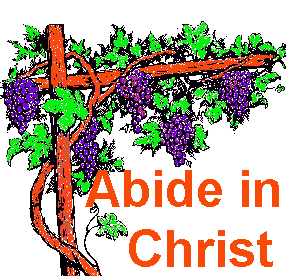Evidence of Genuine Faith
James is the most Jewish
book in the New Testament. It reminds us of the
wisdom literature in the Old Testament. Martin
Luther called James the "epistle of straw" because
it says little about justification by faith, while
emphasizing works as evidence or proof of one’s
saving faith.
The early church placed
James, along with Peter, John and Jude, in the
"general," or "catholic" (universal) epistles.
AUTHOR:
The author was a Jew of Palestine (2:21) who gives
his name as "James, a servant of God and of the Lord
Jesus Christ" (1:1). There are four James in the New
Testament. Only two have been proposed as the author
of this letter: James the son of Zebedee and James
the half-brother of Jesus. John the son of Zebedee
was martyred in A.D. 44 (Acts 12:2). The
authoritative tone of the letter rules out the
lesser known James son of Alphaeus (Matt. 10:2, 3).
The half-brother of Jesus became a strong leader in
the Jerusalem church, and the likely author of the
letter. Who is this James? (1) A child of Joseph by
a former marriage, which would make James a
stepbrother. (2) Some have suggested the word
"brother" is used loosely to mean "cousin." The
first two theories have been advocated by those who
argue for the perpetual virginity of Mary. (3)
Half-brother of Jesus, a son of Joseph and Mary, who
was born after Jesus (cf. Lk. 2:7; Matt. 1:25; with
Mark 6:3; Matt. 13:55; John 2:12; 7:2-8, 10; Matt.
12:46-50). If this is true then James was brought up
in the same environment as Jesus and was in close
touch with Him all during the years that led up to
His ministry. His family and social background would
be practically the same as that of Jesus. He, along
with his brothers and sisters, came to a saving
faith in Christ after Jesus’ death and resurrection
(I Cor. 15:7; Acts 1:14). He became an important
leader of the early Jerusalem church (Acts 12:17;
15:13, 19 21:18-26). He was noted for his strict
adherence to the law (Gal. 2:1, 9-12; Acts
21:17-26). It is interesting that the canonical
status of this letter was questioned until the
church realized that the most likely author was
James the half-brother of Jesus. The author is so
well known in the early church that the simple
designation, "James, a servant of God and the Lord
Jesus Christ" was sufficient to identify him at once
to his readers.
DATE AND PLACE:
The letter was probably written from Jerusalem not
later than A. D. 50 (possibly 48). It was one of the
first books in the New Testament. Some scholars put
First Thessalonians before James in point of time.
The epistle appears to have been written at a time
when the church was still within the general circle
of Judaism, i.e. heavy emphasis on ethics, not much
on Christology, and parallels with the teaching of
Jesus in the Sermon on the Mount. There is no
reference to the Jerusalem Council (Acts 15) which
met in A. D. 49.
RECIPIENTS:
"To the twelve tribes scattered among the nations"
(1:1b) who were being persecuted for their faith. If
the letter was written early in the history of the
church then the first readers were among those in
Jerusalem who were scattered after the stoning of
Stephen (Acts 7:54-60; 11:19). There is a Jewishness
about this letter as seen in the salutation and
greeting. There is little reference to systematic
Christian doctrine, and the name of Jesus appears
only twice (1:1; 2:1). The meeting place is the
synagogue rather than the church (2:2).
Illustrations are taken from the Old Testament and
rural life. The recipients were Jewish Christians
who had been dispersed into other parts of the Roman
Empire because of persecution for their faith.
PURPOSE:
"Faith without works is dead" (2:14-26). James
places strong emphasis on the practical ethical life
of justification by faith. He examines practical
applications of truth in everyday situations,
encouraged Christians who are being persecuted, and
gives instruction on Christian ethics.
KEY VERSE:
2:26
STYLE:
It uses excellent Greek with a strong blend of
sharp, penetrating provocative truths and personal
warmth and love. An attitude of authority permeates
the letter. It is "severely practical." It contains
words that are sharp and uncompromising. This letter
contains more reminiscences of the teaching of
Jesus, and especially of the Sermon on the Mount,
than all the other apostolic writing put together.
However, he does not quote from our Gospels.
FAITH VS. WORKS:
Martin Luther thought James contradicted the Pauline
doctrine of justification by faith. Romans and
Galatians places emphasis on justification by faith
in order to be saved. On the other hand, James while
not denying the necessity of faith in order to be
saved, was insisting that faith must produce works.
Paul and James deal with entirely different
subjects. They are in complete harmony. James is
protesting the hypocrisy of pretending to have faith
without demonstrating it in works (2:18). He is
insisting that faith must produce results. Note how
Paul and James both make their appeal to the faith
of Abraham (Cf. Romans 4 with James 2:21-24).
Alexander Ross notes the practical exhortations
"have their roots in deeper things, in the vital
truths of Christian theology, though these roots, as
is natural, are, to a large extent, hidden form the
eye."
PRAYING FOR THE SICK:
The Roman Catholic Church uses these verses to teach
the doctrine of extreme unction (5:14-15). However,
oil was probably thought to have healing properties.
Many believe this passage teaches the use of prayer
and medicine in healing the sick. The reference is
to the application of medicinal assistance to the
sick person first, and then the elders are commanded
to pray for the sick. It is God who heals all
people, believers and unbelievers alike, with or
without medication. Often, God heals even when we do
not pray. He is a sovereign God.
A. T. Robertson observed:
"There is no doubt as to the ancient opinion about,
and use of, oil as medicine. It is probable that
each one will decide this question according to his
predilections. For my part, I incline to the view
that we have here not a sacramental or priestly
function on the part of these elders but the double
duty of ministry of the word and of medicine (with
prayer). The nearest parallel in modern life is the
medical missionary, who goes with the word of life
and the healing balm of modern science. He heals the
sick with the physician’s skill and the prayer of
faith."
Title: Introduction to
James
Series:
Introduction to Bible Books



